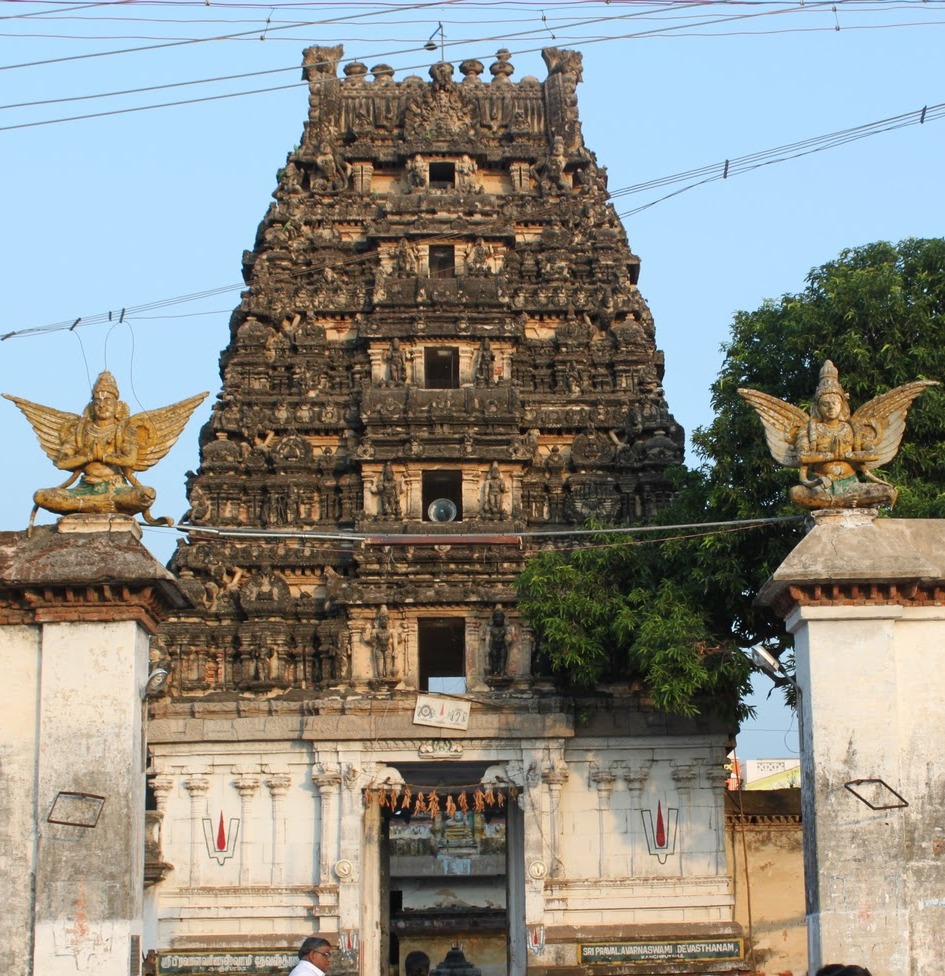Pavalavannam Sri Pavalavannar Temple, Kanchipuram

Diety: Pavala Vannar Perumal, Amman: Pavala Valli Temple Address: Pavalavannam Sri Pavalavannar Temple 15J/9-2, Damalwar St, Melkathirpur, Periya, Kanchipuram, Tamil Nadu 631502 Open between: 06:00 AM to 12:00 PM and 04:00 AM to 08:30 AM
Introduction
- Tiru Pavala Vannam, also known as Pavalavanam, is a prominent Vishnu temple located in Kanchipuram, Tamil Nadu.
- Constructed in the Dravidian style, it is one of the 108 Divyadesams, dedicated to Vishnu, worshipped as Pavalavannar Perumal, and his consort Lakshmi as Pavazhavalli.
- The temple is glorified in the Divya Prabandha by the Azhwar saints and is believed to be linked to sage Naimisaranya.
Puranic Significance
- Built by the Cholas with contributions from later Medieval Cholas and Vijayanagar kings.
- The temple is mentioned in inscriptions from Kulothunga Chola I (1070–1120 CE) and Rajadhiraja Chola (1018–1054 CE).
- Vishnu assumed different colours in various Yugas: white in Krita Yuga, emerald in Tretayuga, green in Dvapara Yuga, and blue in Kali Yuga.
- Vishnu is known as Pavalavannar, who appeared to the twin Aswini gods and retained the name in modern times.
- The temple also holds significance in the story of sage Bhrigu, who worshipped Vishnu here after testing the patience of Brahma, Vishnu, and Shiva.
Special Features
- The central shrine features the image of Pavalavannar in a standing posture, with a separate shrine for his consort Pavazhavalli.
- The temple’s Vimana is called Vedasara Vimana, and it is adorned with stucco images of various legends.
- The temple has separate shrines for Azhwars, Rama with Seetha and Hanuman, and Garuda.
- The granite walls enclose two precincts, with the outer one pierced by a five-tiered Rajagopuram.
- The gopuram is adorned with stucco images, including a depiction of Narasimha.
- The temple tank, Chakra Theertham, is located to the northeast of the temple.
Festivals
- The temple conducts six daily rituals and three yearly festivals.
- The most prominent festival is Brahmotsavam, celebrated during the Tamil month of Vaikasi (May–June).
Century/Period/Age
1000 to 2000 years old.
Saints and Singers
Thirumangai azhwar
Managed By
Hindu Religious and Charitable Endowments (HRCE)
Best Time
கோயில் திறந்திருக்கும் நேரம் : 08.00 12.00 மற்றும் 16.00 19.30 ஸ்ரீகாந்த் : 04427229292 ரங்கபட்டர் : 04427229432
Accommodation
Kanchipuram
Nearest Bus Station
Kanchipuram
Nearest Railway Station
Kanchipuram
Nearest Airport
Chennai









